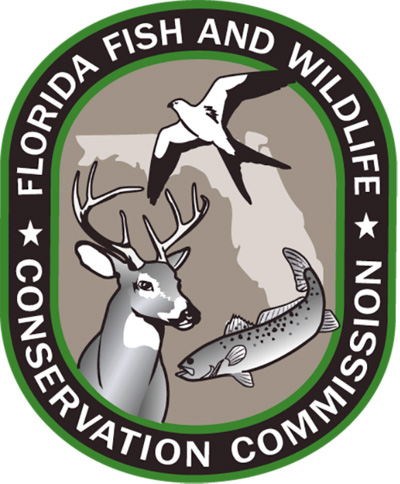Legacy Post Disclaimer
This is a #Legacy post imported from The Apalachicola Time’s previous platform. If you’re experiencing issues with this article, please email us at news@nevespublishing.com.
The Secret Lives of Words: A wonderful bird is the pelican
A young grandson proclaimed to us one afternoon, out of the blue, “dogs don’t have souls.” My ever-wise soulmate Alice replied kindly, “But, I think they do": by soul (Latin anima) Alice had in mind what ANIMates and makes our pets the endearing ANIMals they are. And that was that. I expect the lad, now a teen who’s lived with some deeply loved and loving pups (and studied Latin!) over the intervening years, has likely reconsidered.
I was reminded of that brief exchange when reading my friend James Hargrove’s poem, “Elegy for a Brown Pelican,” in a recent issue of the Apalachicola Times (See Dec. 10, 2020). It’s been a supremely difficult year for Jim, a fellow writer and retired University of Georgia professor, who recently lost Diane, his beloved wife of 45 years, to an unforgiving illness.
Jim’s elegy for the pelican he had seen dead on the Bryant Patton Memorial Bridge, which connects St. George Island and Eastpoint, touches on the notion “That birds and animals have no souls, No need for a place of eternal bliss.”
Yet the poem hints at the chain of being that connects us to all the world’s creatures, even birds, “Who know more about the possibility of heaven / Because they have lived there.” Imagining pelicans in their endless round of soaring and plunging “To capture daily fish and feed their chicks,” the writer laments, “That one will not return, its chicks will starve.”
The ancient Greeks and Romans shared this fascination with birds. Some were held sacred: the swan to the sun-god Apollo; the peacock, for its beauty, to Hera/Roman Juno; the owl to Athena/Minerva, mistress of wisdom. The eagle (aquila, as in AQUILine), symbol of the Rome’s military might, was Jupiter’s messenger.
All manner of birds, not just eagles, could convey divine messages, what the Romans called omina/OMENs, source of OMINous and abOMINable. Even the lowly chicken, associated with the bellicose Mars, was believed to have divinatory powers. A religious functionary called a pullarius (connected to our words PULLet and POULtry) fed these “sacred chickens” just before battle to see if they ate eagerly, a sign that the Romans would be victorious; a clever pullarius, hoping not to anger his commander, would craftily starve the birds beforehand. Our words AUSPICIous and inAUSPICIous derived from such rituals, which the Romans called auspicia/AUSPICes, a word that meant literally “bird-watching” (AUS, from avis, as in AViary/AViator, and SPIC, as in SPECtator/suSPICious).
Rome, like Apalachicola, is situated on a river, just 20 miles from the coast, and its ancient inhabitants were familiar, as we Floridians are, with many species of seabirds. Cranes were noted for their graceful dances and their V-shaped flight formations; Romans ate them for dinner, though storks were preferred, and staged crane-fights in their arenas. Gulls, terrifying in Hitchcock’s “The Birds” and a nuisance in antiquity as they are in Rome today, symbolized for the ancients greed, thievishness, and gluttony.
The heron was admired for its crest; the ibis was sacred to the Egyptian goddess Isis and appears on coinage of the emperor Hadrian. FLAMingos, whose name from Latin flamma means “FLAMe-colored” and who in their pink plastic incarnations populate South Florida lawns, were prized banquet fare, their tongues in particular regarded as delicacies.
And then there’s the PELICAN, Latin pelicanus, a relative of the ibis and heron. Romans borrowed the bird’s name from a term that originally meant “axe” and had been applied by the Greeks to both woodpeckers and pelicans because of their powerful beaks. The pelican’s oldest known ancestor, dating back 30 million years, had that same scissors-like snout with its gaping pouch, which was for the ancients, as for us, the bird’s most distinguishing feature.
The 1st-cent. A.D. Roman naturalist Pliny the Elder described that pouch as “a kind of second stomach” where the “insatiable animal, with its amazing capacity, stows everything.” He calls the bird onocrotalus, “noisy as a jackass” (you can hear their squawking at allaboutbirds.org) as does his younger contemporary, the epigrammatist Martial, who nastily compared the voracious bird to a lady he'd recently dated.
I recall a sign posted in a Navy mess hall back in the 1960s that admonished us not to fill our trays with more than we could eat: “Don’t be as silly as a pelican – his beak holds more than his belly can.” I learned years later that the line had been adapted from a limerick composed in 1910 by the American humorist (and fellow newspaper columnist) Dixon Lanier Merritt (1879–1972); one version of the piece goes like this:
A wonderful bird is the pelican,
His bill will hold more than his belican,
He can take in his beak
Enough food for a week
But I'm damned if I see how the helican!
Merritt’s ditty was reportedly inspired by a picture postcard sent him by a reader vacationing at a Florida beach. The capacity of the bird’s beak similarly inspired the name of the Pelican street-sweeper, introduced by the Elgin company in 1914 and still in use today; a 2017 Car and Driver review praised the vehicle’s “proboscis,” which, like the bird, “will sweep up anything that comes in its path.”
Happily, it turns out pelicans are not the gluttons they may seem to some. Both parents work to nourish their young, regurgitating food for them the first week or so, and later opening their beaks to let the chicks feed from their pouches. During the Middle Ages the belief evolved, likely from the bird’s habit of pressing its bill against its chest to express its pouch, that a mother pelican, when unable to find sufficient food for her chicks, would pierce her breast to nourish them with her own blood.
From this the bird became a symbol of Christ’s sacrifice for his followers. Thomas Aquinas, in his 13th century Eucharist hymn Adoro Te Devote (“Devoutly I Adore You”), calls upon Pie Pelicane, Jesu Domine, “Good Pelican, Lord Jesus,” to cleanse sinners with his blood. Antique brass sanctuary bells from England and elsewhere bear the bird’s image and the label PELICANUS. Queen Elizabeth I wore a pelican pendant signifying her own role as England’s nurturer.
Thousands of years before Christ, the Egyptians viewed pelicans as divine and capable of aiding the dead in safely journeying to the Underworld. Other cultures, from aboriginal Australians to ancient Peruvians, have revered the creature, which is among the world’s largest flying birds. Flash forward to 1966 and Louisiana named the brown pelican, prominent in the state’s iconography since the 1800s, its official bird. Though I love our own similarly honored avian, the polyglot northern mockingbird who multilingually babbles in our yard, I’m a bit sorry that Louisianans beat Florida to the pelican punch.
A highlight of our times in Apalach are the walks with our French bulldog Ipsa, down Avenue D to Water Street, to visit those critters Ipsa knows as “the big birds” – the pelicans that perch behind 13 Mile Seafood Market, waiting for Melanie, TJ, or Thomas to toss them treats. Like Alice, I firmly believe these feathery friends have souls that soar; certainly they uplift ours, and Ipsa’s too.
Rick LaFleur is retired from 40 years of teaching Latin language and literature at the University of Georgia, which during his tenure came to have the largest Latin enrollment of all of the nation’s colleges and universities. His latest book is The Secret Lives of Words, a collection of nearly 60 of these essays, expanded with more than 250 illustrations. His Facebook group, “Doctor Illa Flora’s Latin in the Real World,” numbers about 4,000 members. Rick and wife Alice live part of the year in Apalachicola, under the careful watch of their French bulldog Ipsa.
This article originally appeared on The Apalachicola Times: The Secret Lives of Words: A wonderful bird is the pelican



Meet the Editor
David Adlerstein, The Apalachicola Times’ digital editor, started with the news outlet in January 2002 as a reporter.
Prior to then, David Adlerstein began as a newspaperman with a small Boston weekly, after graduating magna cum laude from Brandeis University in Waltham, Massachusetts. He later edited the weekly Bellville Times, and as business reporter for the daily Marion Star, both not far from his hometown of Columbus, Ohio.
In 1995, he moved to South Florida, and worked as a business reporter and editor of Medical Business newspaper. In Jan. 2002, he began with the Apalachicola Times, first as reporter and later as editor, and in Oct. 2020, also began editing the Port St. Joe Star.